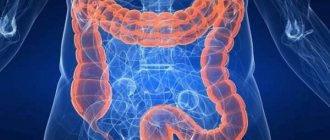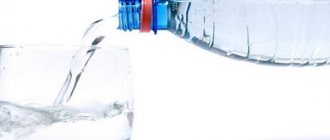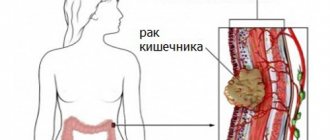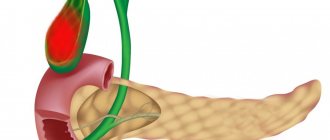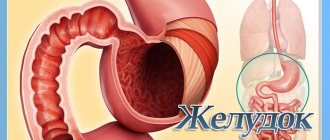Bowel functions
So, more details. The intestines break down nutrients, which then enter the blood. They come from the stomach already digested. Everything that turns out to be unnecessary leaves him through the anus, in the form of gases and feces. The intestines perform a peculiar role as a juicer. That is, it selects everything useful from the body, and removes the rest that does not bring any benefit to the outside. Also, along the entire length of the intestines, an adult and a child have beneficial bacteria. They are able to attack pathogenic bacteria and microorganisms. If the intestinal microflora is disrupted, problems with the digestive system may begin and various diseases may begin to develop.
How to improve bowel function
- Vegetables. It is necessary to consume raw vegetables, they are rich in fiber, and natural cleansing of the body
. You can eat carrots, white cabbage, radishes, zucchini, beets, radishes. - Apples. Like the vegetables above, apples also contain a large amount of fiber. They contain fruit acid, which dissolves toxins well.
- Fresh juices. This is a folk remedy that will help balance pH levels and flush out toxins from the body.
- Porridge. These include buckwheat, rice, wheat and other grains. Thanks to dietary fiber, the body is freed from waste and toxins.
- Microcrystalline cellulose. It absorbs toxins, poisons, cholesterol
and removes them from the body along with feces. But when taking MCC, you must drink a lot of water, otherwise you risk getting constipated. - Bran. They are good at removing substances that the body does not need. You can buy them in any store and pharmacies.
Human Anatomy - Intestines
What is the length of the intestine
Structure
The intestinal section begins with the duodenum. It is shaped like an arc. Its length is approximately 20 centimeters. It is she who controls the functioning of the stomach, that is, regulates its motor function, and is also responsible for the amount of acid secreted. It also breaks down proteins, carbohydrates and fats.
Next comes the small intestine. It consists of the jejunum and the iliac part. Here, beneficial substances are absorbed from processed food into the blood. This intestine is considered the most important, without it a person cannot live.
After the small intestine comes the large intestine. Everything that could not be digested gets into it. Its main function will be the formation of feces and its removal, as well as the absorption of water. The digestion process continues in the large intestine. Various bacteria help her in this matter. The more there are, the easier it is to do this. But when there are few of them, for example due to the use of antibiotics, then it becomes difficult for the intestines.
The large intestine ends in the rectum. This is where feces accumulate, which is then expelled from the body when you go to the toilet.
Along the entire length of the adult intestine there are important bacteria that help a person maintain the immune system. Therefore, it is especially important to monitor it.
Colon motility
The main link in the digestive system is the duodenum. It is called so because the length of the human duodenum is equal to 12 folded fingers across (about 20 cm).
The duodenum in humans consists of four parts:
- Horizontal (upper) measuring 4 cm. It is located obliquely, has a bend and continues downward.
- The descending one is located at the level of the spine, measures up to 12 cm and is inactive. Controls the flow of bile.
- The horizontal (bottom) has an upward bend up to 8 cm long.
- The ascending one coincides with the lumbar region, its length is 5 cm. It forms a curvature in the area of connection with the small intestine.
As for the rectum, this is the last part of the large intestine. Undigested remnants of absorbed food penetrate there, from which feces are formed, which are excreted from the body thanks to the complex function of the stomach and intestines.
It begins at the level of the 3rd sacral vertebra and ends at the anus. The length of the adult rectum is 14–18 cm. Its diameter varies from 4 cm at the beginning to 7 cm at its widest part, then it narrows to the size of the opening at the level of the anus.
The straight line has two sphincters - involuntary and voluntary. The first is inside the body, arbitrary outside. In men, the involuntary sphincter is thicker than in women.
The main function of the rectum is to eliminate waste from the body. This part is an important element of the intestines, so it should work normally. Also very prone to painful conditions. If the rectum does not work properly, the process of waste rotting begins and the body is poisoned. This is why you need to monitor your health status.
Obvious signs of disease are:
- Decreased performance.
- Flatulence (increased gas production, which leads to bloating).
- Pain in the head.
- Problems with stool.
- Specific body odor.
- Temperature fluctuation (low to high).
- Colds and viral diseases.
These symptoms can be avoided by cleansing the body.
Important! Problems with bowel movements can be associated not only with poor diet, but also with a sedentary lifestyle. Insufficient physical activity reduces the tone of the abdominal muscles.
The following sections of the large intestine are distinguished:
- cecum
- ascending colon
- transverse colon
- descending colon
- sigmoid colon
- rectum.
The ascending colon forms a right hepatic bend at a right angle, less often at an acute angle, in the upper right region of the abdomen as it passes into the transverse colon. The right bend is in contact with the lower surface of the liver and the bottom of the gallbladder.
The transverse colon has a length of 25 to 62 cm and a mesentery of 12 cm. The transverse intestine hanging down can be located in the small pelvis and become the contents of the hernial sac, even with inguinal and femoral hernias.
In the left upper region of the abdomen there is the left splenic flexure at the transition of the transverse colon to the descending colon. It forms an acute angle.
The length of the colon ranges from 110 to 215 cm, the internal diameter is 5-8 cm at the beginning and decreases towards the rectum.
Unlike the small intestine, the structure of the large intestine contains ribbons, haustra and omental processes. The tapes tighten and corrugate the intestine, thereby forming haustra, niche-like protrusions of the intestinal wall. Omental processes are inclusions of fat about 5 cm long, covered with a serous membrane. Their functional purpose is unknown.
The small intestine is inserted into the cecum; at the junction there is the ileocecal valve, which, opening slightly, allows the contents of the small intestine to enter the cecum. It also prevents the contents of the colon from flowing back into the small intestine.
The vermiform appendix (appendix) is a continuation of the cecum, its length is normally 7-8 cm, diameter 8 mm. In some cases, the length can vary from 0.5 cm to 33 cm. The process has its own mesentery, so the position of its peripheral (terminal) part can change.
The following positions of the appendix in the abdominal cavity are possible:
- the process is directed into the pelvic cavity;
- parallel to the ileum;
- in the right lateral canal;
- ascending, when the apex may be in the subhepatic region;
- retrocecal, when the process is located behind the cecum.
The ascending colon has a length of 18-20 cm. In 5% of cases it has a mesentery and becomes mobile, which can cause volvulus, cecum and ascending.
The wall of the colon is composed of
- mucous membrane
- submucosa
- muscularis propria
- serous membrane.
The mucous membrane consists of, among other things, a large number of goblet cells that produce mucus. Mucus makes it easier for stool to move through the colon.
The submucosa contains a large number of blood and lymphatic vessels, as well as nerve fibers.
The muscular lining of the colon is significantly different from the small intestine. It consists of powerful smooth muscles, forming an inner layer of circular and outer layer of longitudinal muscle fibers. Between these layers is the nerve plexus.
There may be a bulge in the wall of the colon called a diverticulum. It can be either congenital or acquired.
The serous membrane has a number of features in its structure. On its surface there are omental processes 4-5 cm long, filled with fatty tissue. These processes are capable of twisting, which can lead to necrosis and symptoms of an acute abdomen.
The presence of a large number of physiological sphincters in the colon ensures its motility.
The ileocecal sphincter of Varolius is located at the junction of the ileum into the cecum. The colocecal sphincter of Busi separates the cecum and ascending colon. Geertz's sphincter is located on the border of the middle and upper third of the ascending colon. The right and left sphincters of Canon are located, respectively, near the right and left bends of the transverse colon .
Sphincters are wide folds that are closed in the normal state and straighten during peristalsis.
Various parts of the nervous system are involved in ensuring the motility of the colon. Sensitive fibers of the spinal nerves and the vagus nerve provide sensitive innervation to the intestine. The motor function of the intestine is provided by the autonomic nervous system.
The final function of the intestine is provided by the rectum.
As for the rectum, this is the last part of the large intestine. Undigested remnants of absorbed food penetrate there, from which feces are formed, which are excreted from the body thanks to the complex function of the stomach and intestines.
It is the upper part that forms the loop, starting at the level of the 12th thoracic vertebra. It smoothly turns into a descending one, its length is no more than 4 cm, then it runs almost parallel to the spinal column, reaching the 3rd lumbar vertebra, and turns to the left. This creates the bottom bend. Descending duodenum averages up to 9 cm.
Near it there are also important anatomical structures: the right kidney, the common bile duct and the liver. Between the descending duodenum and the head of the pancreas there is a groove in which the common bile duct lies. Along the way, it reunites with the pancreatic duct and, on the surface of the major papilla, flows into the cavity of the digestive tube.
The next part is horizontal, which is located horizontally at the level of the third lumbar vertebra. It is adjacent to the inferior vena cava, then gives rise to the ascending duodenum.
The ascending duodenum is short, no more than 2 cm, it turns sharply and passes into the jejunum. This small bend is called the duodenum jejunum and is attached to the diaphragm by muscles.
The ascending duodenum passes next to the mesenteric artery and vein, and the abdominal aorta.
Its location is retroperitoneal throughout almost its entire length, except for its ampullary part.
Two sections of the intestinum, which have almost the same structure, so they are often described together.
The loops of jejunum are located in the abdominal cavity on the left, it is covered on all sides by serosa (peritoneum). Anatomically, the jejunum and ileum are part of the mesenteric part of the intestinum tenue; they have a well-defined serous membrane.
The anatomy of the jejunum and ileum is not particularly different. The exception is a larger diameter, thicker walls, and a noticeably greater blood supply. The mesenteric part of the small intestine is covered almost throughout its entire length with an omentum.
The length of the jejunum is up to 1.8 meters in tonic tension, after death it relaxes and increases in length to 2.4 meters. The muscular layer of its walls provides contractions, peristalsis and rhythmic segmentation.
The ileum is separated from the blind by a special anatomical formation - the Bauginian valve. It is also called the ileocecal valve.
Jejunum occupies the lower floor of the abdominal cavity, flows into the caecum in the area of the iliac fossa on the right. It is completely covered by peritoneum. Its length is from 1.3 to 2.6 meters. In an atonic state, it can stretch up to 3.6 meters. Among its functions, in the first place are the digestion, absorption of food, its movement into subsequent sections of the intestinum with the help of peristaltic waves, as well as the production of neurotensin, which is involved in the regulation of drinking and eating behavior in humans.
This is the beginning of the large intestine, the caecum is covered on all sides by peritoneum. It resembles a bag in shape, the length and diameter of which are almost equal (6 cm and 7-7.5 cm). Caecum is located in the right iliac fossa, bounded on both sides by sphincters, the function of which is to ensure one-way flow of chyme. At the border with the intestinum tenue, this sphinker is called the valve of Bauhinius, and at the border of the cecum and colon - the sphincter of Busi.
Colon diseases
Today, there are many diseases that can harm this part of the intestine. Here are the main ones:
- Colitis is an inflammation of the intestine that can progress in acute, chronic and ulcerative forms. It can occur after poor nutrition, surgery, or infection. It is considered a very dangerous disease, since in severe forms it can lead to peritonitis or even death.
- Suction problem. It is in the colon that fluids are absorbed, but sometimes due to inflammation this function is disrupted. Because of this, the body may suffer from dehydration.
- Constipation is a disorder caused by the absence of stool for a long time. According to the rules, a person must go to the toilet once a day; if he does not do this, then constipation has occurred. This problem comes from poor diet or certain diseases.
- Diarrhea is a frequent urge to go to the toilet, in which stool comes out in a liquid state. This disorder can be caused by infection, disease, poor diet, or stress. With diarrhea, a person may experience pain in the anus and abdomen.
Symptoms of problems with the small intestine
The most common disease of this part of the digestive system is.
Most often, problems in this part of the intestine are signaled by the following symptoms:
- pain in the lower abdomen;
- constipation;
- pain during defecation;
- pain on palpation and compaction;
- diarrhea;
- colitis;
- dark color of stool, coming out in the form of tight balls;
- blood in stool;
- frequent nausea;
- pungent odor in stool.
You can read more about diseases of the small intestine in this.
In order to prevent the development of diseases in the rectum, you should adhere to the following recommendations:
- Learn to eat slowly. The fact is that when you swallow too large pieces of food, as often happens when eating “on the run,” it is then quite difficult for the intestines to digest the food. As a result, you should try to chew your food thoroughly.
- Switch to fractional meals. This means that you need to eat often (5-6 times a day), but the portions should be small. This will protect you from overeating, and at the same time will not leave you hungry. In addition, it is important to know that the first meals (breakfast, afternoon snack and lunch) should be as nutritious and dense as possible, and dinner should be light.
- Combine menus correctly. This means that it is better not to combine meat and fish dishes into one meal, but to divide them into two separate meals. In addition, it is better not to combine flour dishes with cereals, or fruits with nuts, as this will complicate the digestion process.
- Place an emphasis on fermented milk products (kefir, fermented baked milk, yogurt, cottage cheese). They contain very useful bifidobacteria, which directly affect the digestive system. With regular intake of such food, a person will forget about constipation and problems with digestion.
- Add fiber to the menu. It is found in raw vegetables, fruits, and whole grain products. This substance will have a beneficial effect on intestinal function.
- Avoid eating processed foods and foods of unknown origin (bought from your grandmother at the market). It is best to learn how to cook yourself, because home-made food is not only tastier and more affordable, but it is also healthier, because when cooking on your own, a person will use only high-quality products.
- It is very important to lead a healthy lifestyle. First of all, this includes giving up bad habits (drinking alcoholic beverages and alcohol), since they really affect the functioning of the digestive tract, and naturally, not for the better. For example, frequent drinking of alcohol causes stomach and duodenal ulcers, and smoking provokes the development of cancer.
- Engage in physical activity. It has been proven that sport, even in small portions, can not only increase the overall tone of one’s condition, but also protect against the formation of various diseases of the nervous, digestive and cardiovascular systems.
- Avoid stress and nervous tension, as they are directly related to the health of the digestive system. Moreover, it is neuroses and mental disorders that very often become the true cause of the development of intestinal diseases. This is explained by the fact that in such a state a person has no control over what he eats. Thus, his digestive system suffers from chronic overeating, eating fatty and spicy foods.
- Monitor your weight and prevent obesity, as excess kilograms will negatively affect metabolism and overall metabolism.
- Drink freshly squeezed juices. It is worth knowing that you can consume not only fruit nectars, but also vegetable ones. In addition, combined fruit and vegetable juices are considered more beneficial. It is advisable to drink them half an hour before meals.
- Minimize your intake of fats, as they will not only burden overall digestion, but will also contribute to liver and heart disease (due to excessive cholesterol levels).
Harmful fatty foods include: Gastroenterologist, therapist
Work experience more than 7 years.
Professional skills:
diagnosis and treatment of diseases of the gastrointestinal tract and biliary system.
An important role in the human body is played by the intestines, which are part of the gastrointestinal tract responsible for digestion and excretion. It is located in the human abdominal cavity. Many people are interested in the question: how many meters does the intestine of an adult person contain?
The total length of this part of the gastrointestinal tract is about 8 meters - this is during life (tonic tension state), and up to 15 meters - after physical death (atonic state). In a child after birth, its length ranges from 340-360 cm, and at the age of about a year it tends to increase by 50 percent, exceeding the child’s height by 6 times. At the age of five, the length is already 7-8 times greater than height, while in an adult it is 5.5 times greater than his height.
The structure of the intestine changes depending on age, and its position and shape also change. The maximum change occurs at 1-3 years, since at this time the child’s diet changes from dairy to mixed with other types of food.
Strictly speaking, it is quite difficult to find out how many meters long the intestines of each individual person are, since, in addition to age-related changes in size, the length of the intestines may depend on the type of nutrition. With sufficient financial resources, a person (unless, of course, he is a convinced vegetarian) eats much more meat products, which causes a decrease in length. But when eating a large amount of plant foods, the intestines, on the contrary, lengthen. This fact has been proven by studying the size of this part of the gastrointestinal tract in carnivorous and herbivorous animals of approximately the same mass.
The intestines are divided into two main sections - small intestines and large intestines. Let's look at their structure and how many meters they are long.
Diseases of the small intestine
The small intestine is considered very important for a person, but diseases can periodically arise that can change normal life. Some of them:
- Enteritis. This disease is caused by Escherichia coli or Salmonella. Long-term use of antibiotics may also be a cause.
- Celiac disease. This disease occurs when there is a deficiency of the enzyme that can break down gluten. It leaves behind residues that have a negative effect on the small intestine. Because of this, the walls of the latter become thinner, and it begins to do its job poorly.
- Whipple's disease. The cause is inflammation, which is caused by certain bacteria, after which they block the ability to absorb nutrients.
- Dysbacteriosis. It is formed when there is a significant decrease in beneficial bacteria in the small intestine. This can occur due to long-term use of antibiotics or antimicrobial agents, as well as infections or food poisoning.
Functions performed by the small intestine
This department has the following “working” functions:
- Secretory functions (ensuring the activity of the pancreas, due to which the latter can produce gastric juice).
- Digestive functions (helps digest food, as well as absorb incoming substances).
- Endocrine functions (they are performed by special cells that synthesize peptide hormones).
- Motor functions (moving food further along the digestive tract).
- Absorption functions (it absorbs chemical products, medications and regular food).
All these functions occur thanks to which all internal organs are covered, including the small intestine.
How long is the intestine in an adult?
The question is ambiguous. The length of the small intestine is approximately four meters. This figure may be a little more or less, it depends on the size of the person, as well as his gender. In a dead person, the length of the small intestine will be much greater, approximately eight meters. This is due to the fact that he lacks muscle tone.
The length of the large intestine in an adult will be much shorter than the small intestine. It will be approximately two meters, but there may be slight changes in the indicators.
Interesting Facts
Gas formation, or bloating, occurs from swallowed air, which passes along the entire length of the intestines of an adult and a child. In order to avoid this, you need to chew your food thoroughly.
When food enters the body, all digestive organs begin to contract so that food passes more easily.
About 7 liters of fluid enters the colon. It is obtained from water, mucus, bile and enzymes. But only 7 tablespoons come out of the human body.






